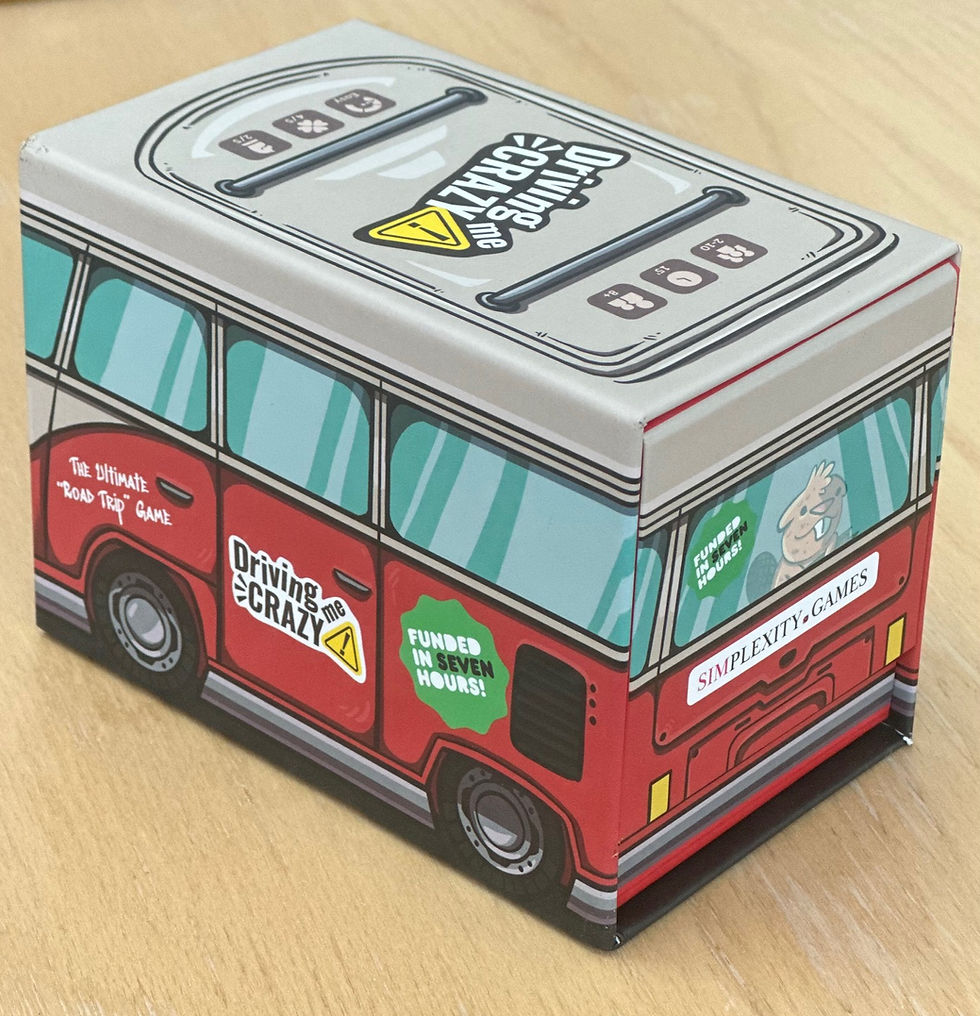Imagicien
- David Fox

- Jul 9, 2021
- 3 min read
Many games can be described as a 'gamer version' of a simpler pastime or activity: MicroMacro (Pegasus Spiele) is Where's Waldo? with a plot (that's Where's Wally? in the UK), Rise of Augustus (Hurrican/Lautapelit) is Bingo with a theme, Kingdomino (Blue Orange) is, well, Dominoes, and so on. Imagicien, then, is gamers' join-the-dots. Still interested? Good, glad you are; read on...

Imagicien, by Olivier Mahy, has been realised superbly with art by Guillaume Bernon and great production by publisher BLAM!: four glossy double-sided boards (colour on one side, grey on the other) are accompanied by a deck of 96 large, double-sided cards, four dry-erase pens, a 30-second timer and a four-page rulebook. While our copy of the game was in French, the concept was simple enough to get going without them and we were playing in seconds; reading the English rules later, there are some refinements that add to the experience and make it even more family-friendly than it already appears.
A single game consists of playing both sides of four cards that show ingredients for recipes for spells: this can be - depending on difficulty - one or more lines, one or more loops, circles, and even curves. When everyone is ready, all players start drawing on their ingredients board, from symbol to symbol as shown on the card, trying to recognise the shape that emerges. Sneakily, many ingredients look similar to each other; double-sneaky, some of the shapes are rotated 90 or 180 degrees.
As soon as a player thinks they know what the shape is - it doesn't have to be complete - they write it down on their board and flip the timer. Everyone else now has 30 seconds to make their guess. When time is up, the first player gets 2 points for a correct answer but loses a point if incorrect; everyone else gets 1 point if correct, with no penalty if not. The recipe card is flipped or a new one drawn if both sides have been used and a player who scored 2 points uses the grey (so more difficult) side of their board for the next recipe. This is the formula for all eight rounds and the win goes to the player or players with the most points.
Imagicien is good, quick, fun, particularly for families and tweens, and even a veteran gamer like me can find enough challenge in deciphering the spells and racing for the 2 points. We really enjoyed it, from ages 10 to 75, and while it really is 'join the dots', those dots can be tricky to locate and, even then, rotating the board to the right orientation doesn't always help you identify things... (Spoiler 1)
There is the issue that shape recognition is age-dependent, so it may be that a younger player simply hasn't seen what is being depicted (Spoiler 2), even if they are given an extra 30 seconds, as the rules suggest. Further, it can be the case that, as with dexterity and speed games, one player is simply more naturally skilled, which can make the experience less enjoyable for others. A sad but interesting side note is that, when I played with my father - who is in the early stages of dementia but had been quite perspicacious a decade ago - he struggled to make more than a couple of connections each game. I'd have a personal gripe that there are only four sheets and pens in the box; surely this could have been a five or six player game easily enough.
Right, I'm off to design gamers' spot-the-difference, gamers' colour-by-numbers, and gamers' put-the-shapes-in-the-hole (if someone hasn't got there before me). (Review by David Fox)
(Spoiler 1 - "Oh, it's a carrot! I thought it was a rocket.") (Spoiler 2 - "What's a set square?")




